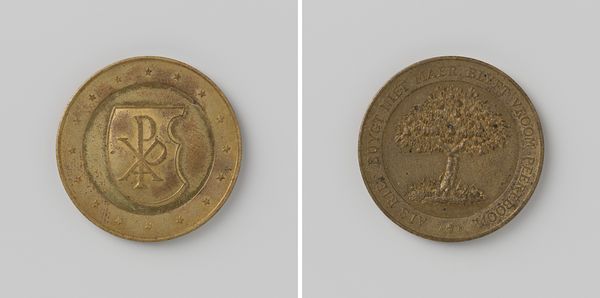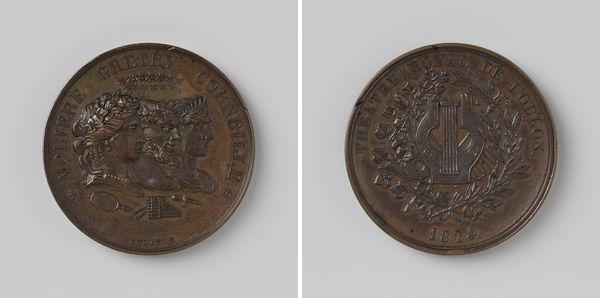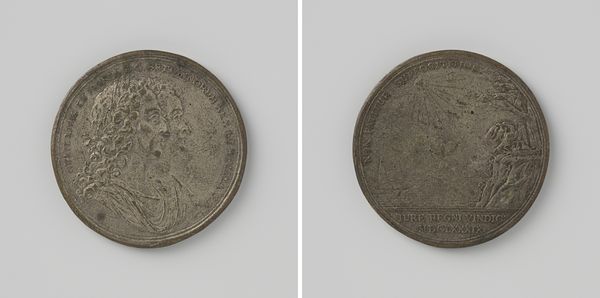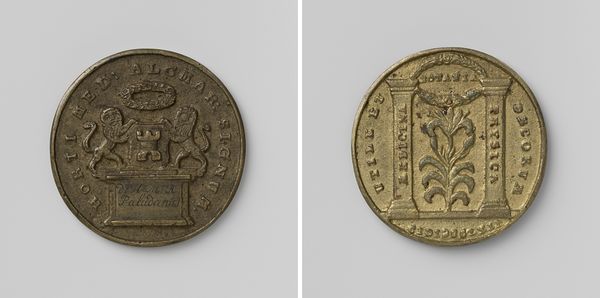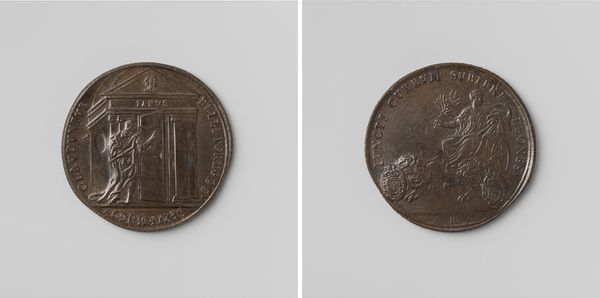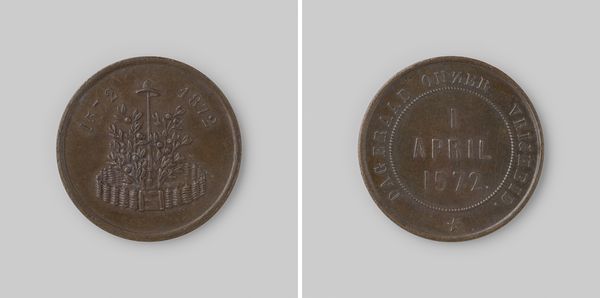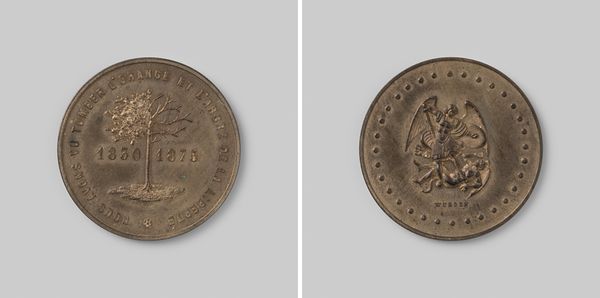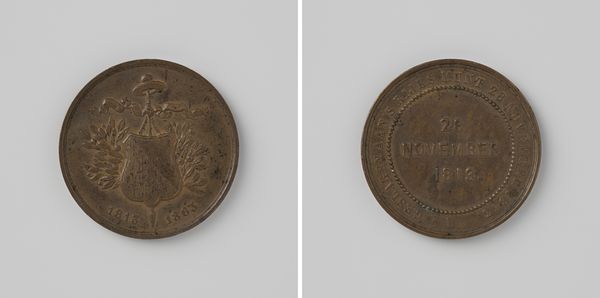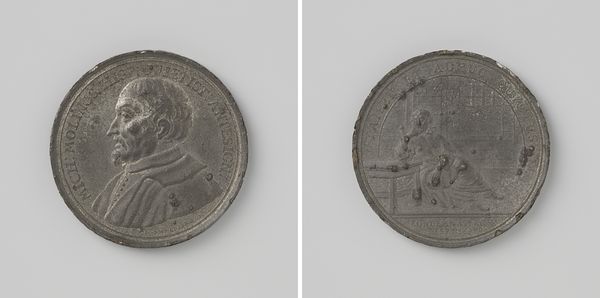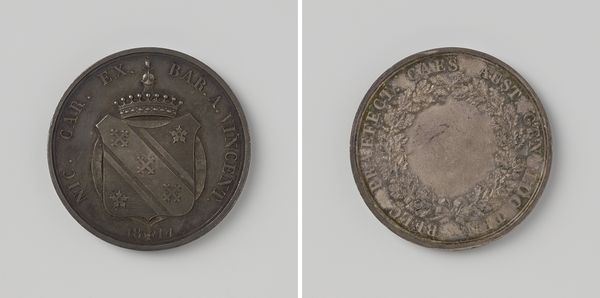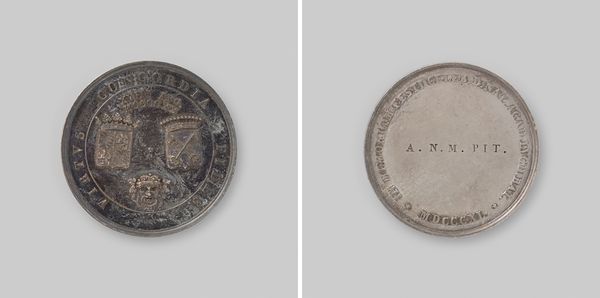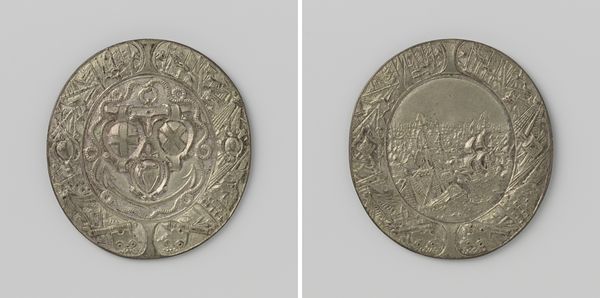
metal, engraving
#
portrait
#
decorative element
#
baroque
#
dutch-golden-age
#
metal
#
old engraving style
#
ceramic
#
coin
#
engraving
Dimensions: diameter 3.6 cm, weight 17.79 gr
Copyright: Rijks Museum: Open Domain
Editor: This is the Wijnkopersgilde van Utrecht gildepenning van Nicolaas Vreem, from 1650. It's an engraved metal coin, and something about it makes me think about value and trade. How do you read the cultural context encoded in the piece? Curator: It’s all about labor and production here. Look at the image: the hand plucking grapes, the vessels presumably filled with wine...It speaks directly to the craftsmanship inherent in winemaking. Consider who was actually doing this labor versus who benefited from the final product and was buying such guild objects. Who created this token and what purpose did it really serve? Editor: So, you see this not just as a celebration of the wine trade, but as a kind of document of the labor involved? It's also decorative element as much as it is practical object. Curator: Precisely. It’s crucial to look at the guild system itself. These weren't mere gatherings; they were structured hierarchies defining the parameters of labor. Think about what it meant to be accepted as a master, the social capital imbued in that piece of metal. Even today, there’s a strong market for objects like this; not for the beverage itself but what is represents materially. Do you agree it represents cultural prestige as much as hard work? Editor: Absolutely, I didn't think about this as commodity in itself, divorced from the original practical purpose. What’s interesting, looking at it that way, is to think about the exchange happening *now*, looking at and commenting on its image! Curator: Exactly! The act of our analyzing, distributing knowledge of its very image is the means of its value to modern eyes. This perspective also raises interesting ethical implications, how museums circulate this wealth. Editor: This way of analysis gives me an expanded appreciation for understanding value.
Comments
No comments
Be the first to comment and join the conversation on the ultimate creative platform.

